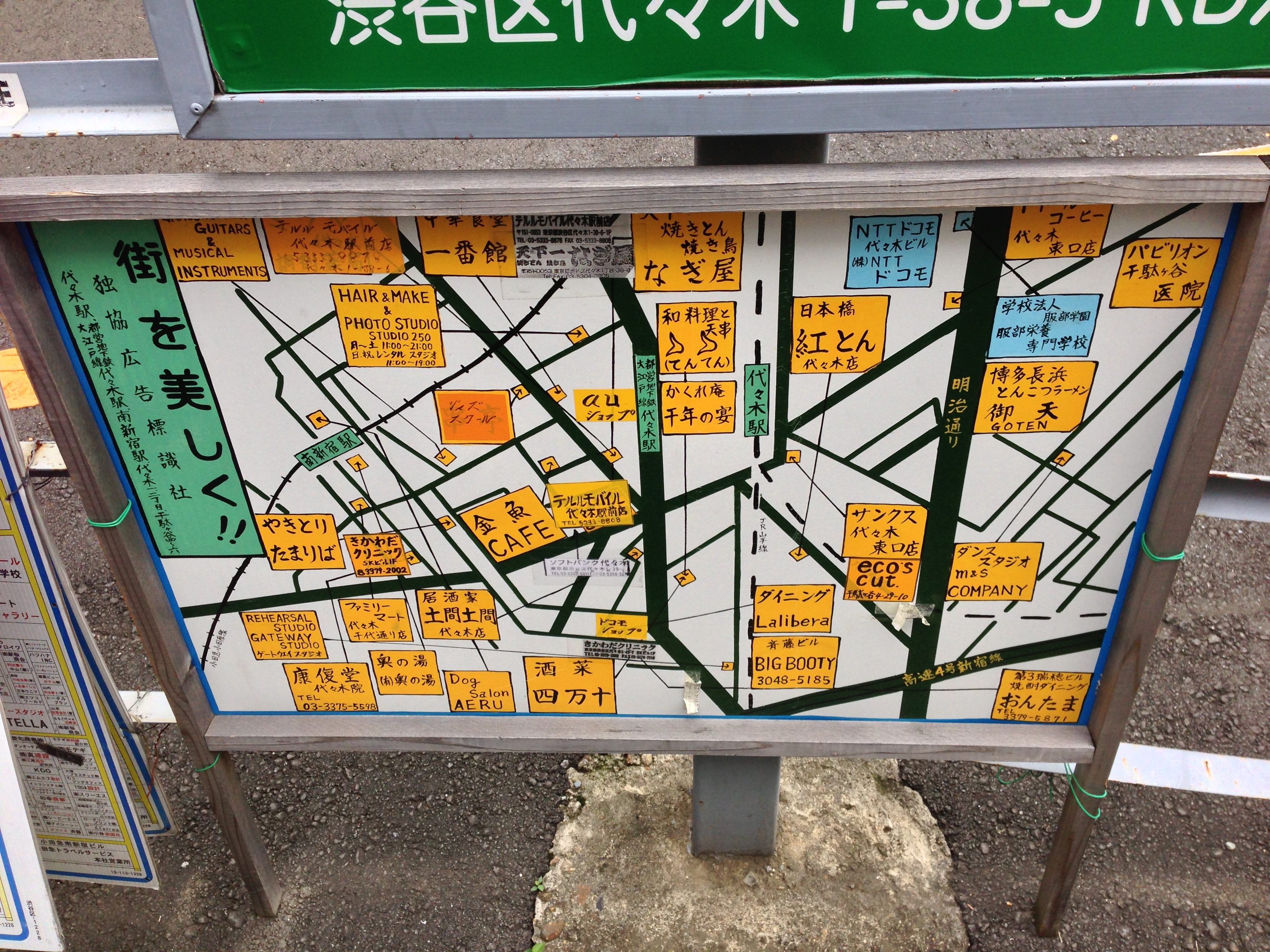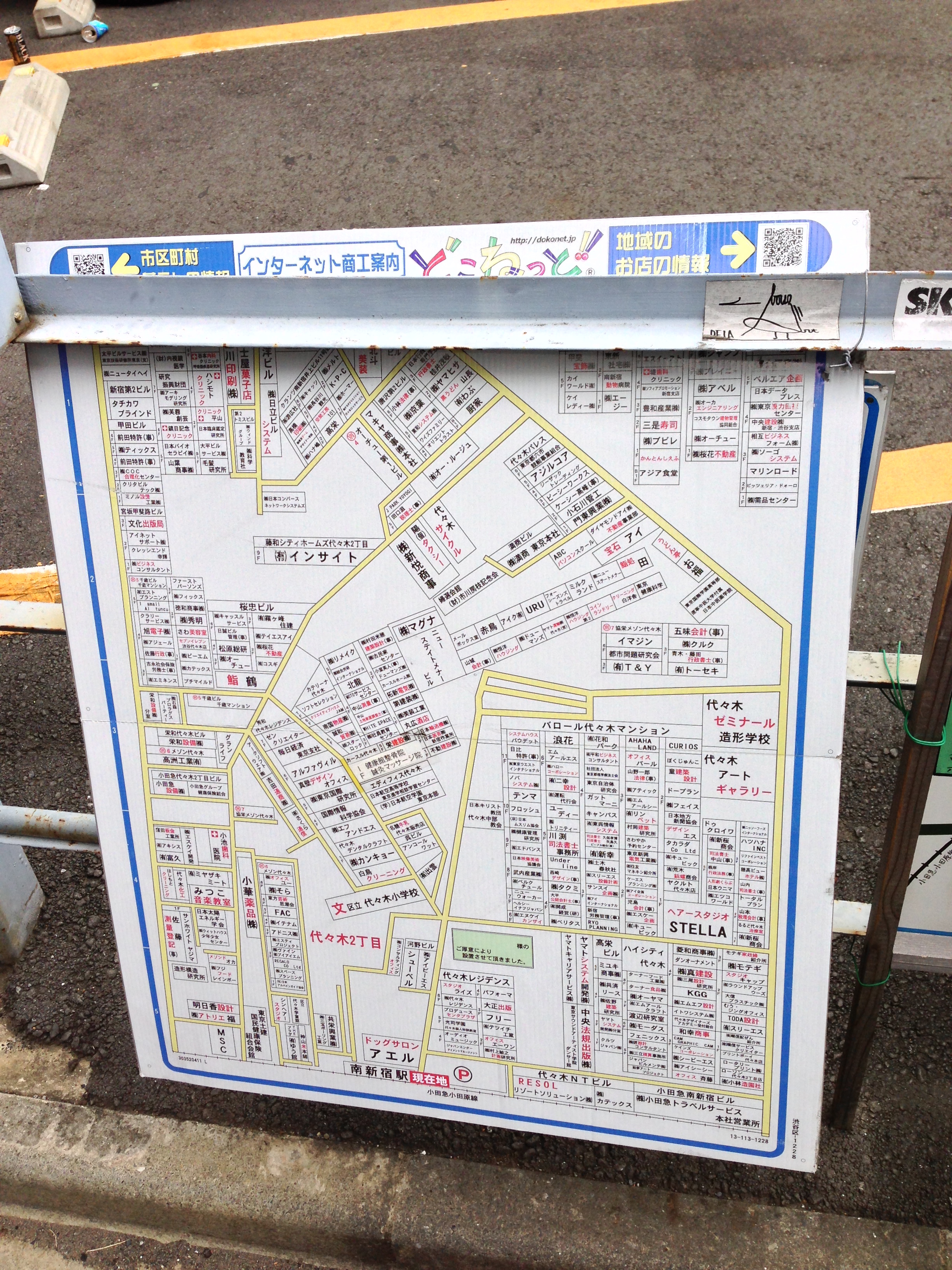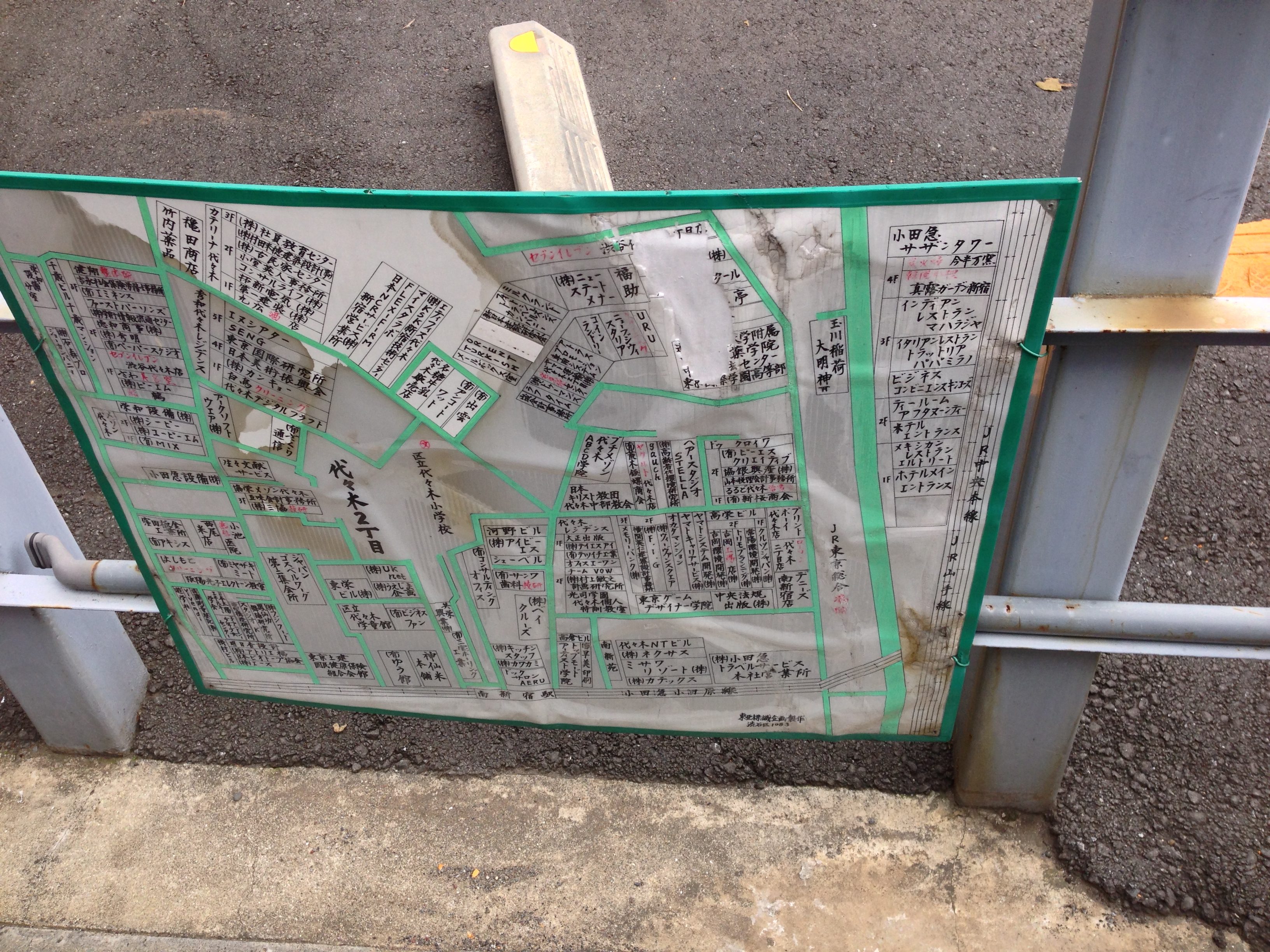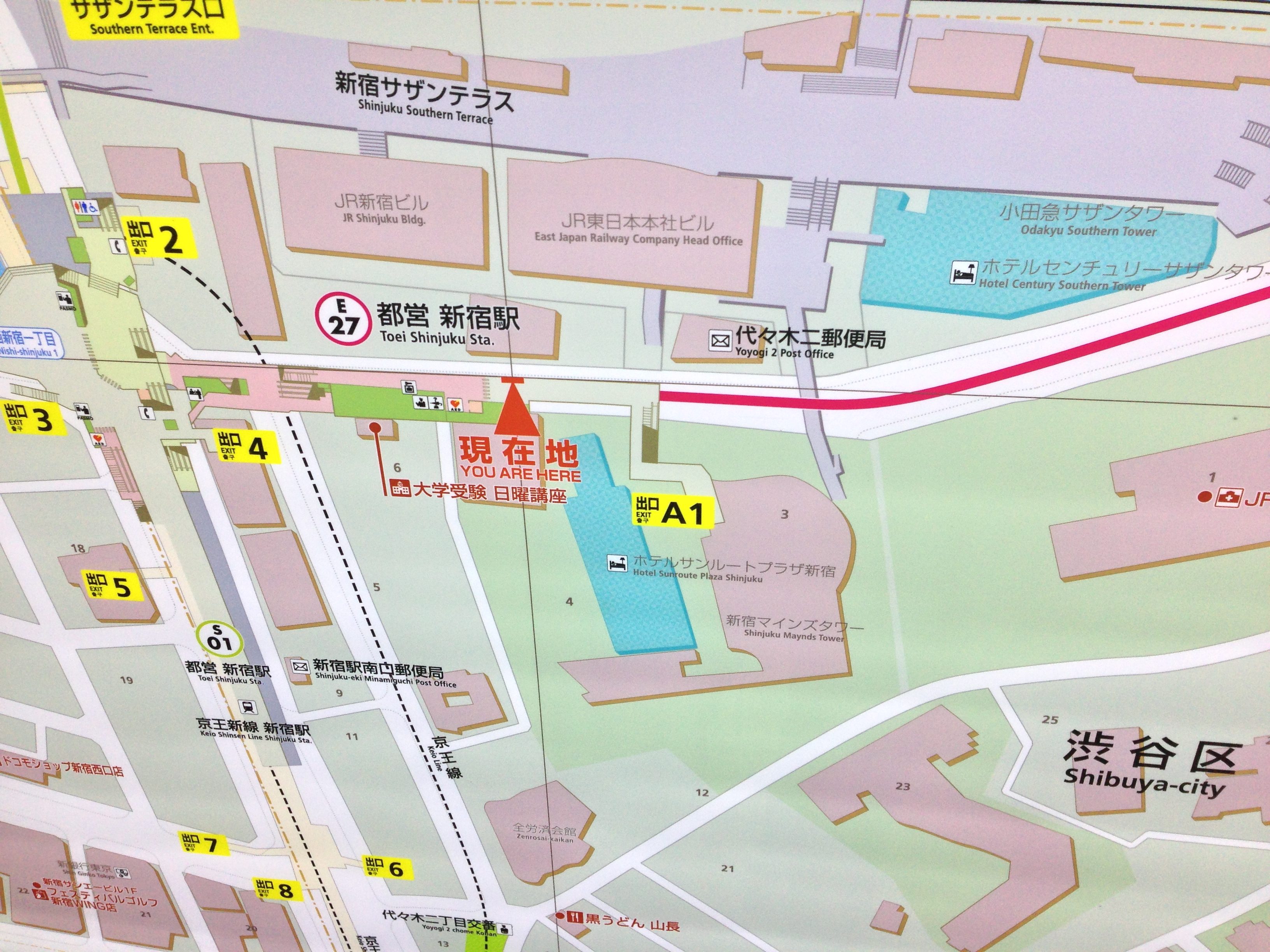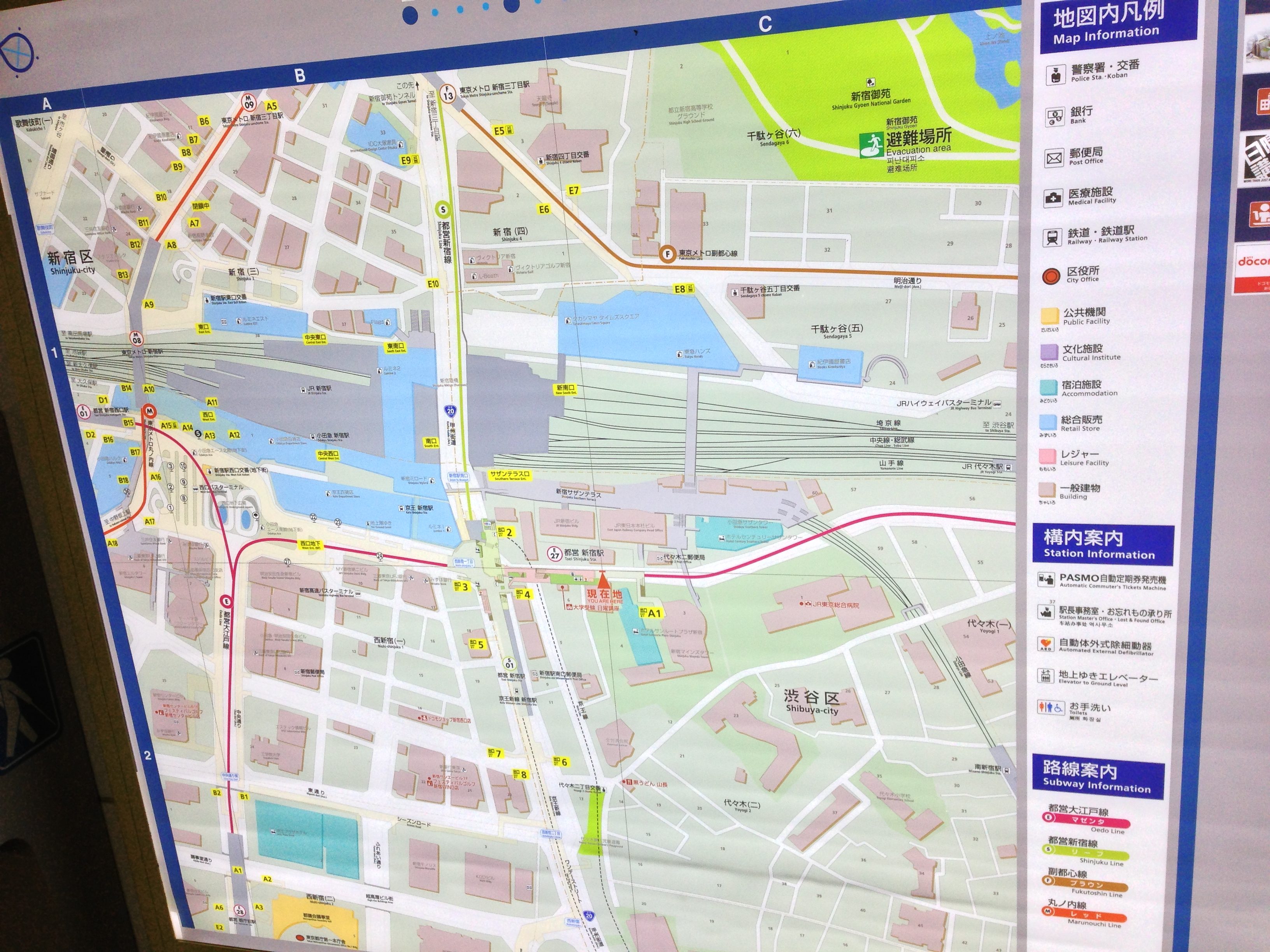When we last saw our intrepid heroes, they had just finished looking at various maps in Yoyogi, near Shinjuku. Today, we follow them as they explore small parts of that neighbourhood.
(Note: I found the sljfaq.org ‘multiradical’ character finder super-helpful, especially as I seem to have lost my ability to draw kanji.)
First, we see their favourite little store of the day. It seemed to be a textbook store, but it also had a wide selection of little stationary:
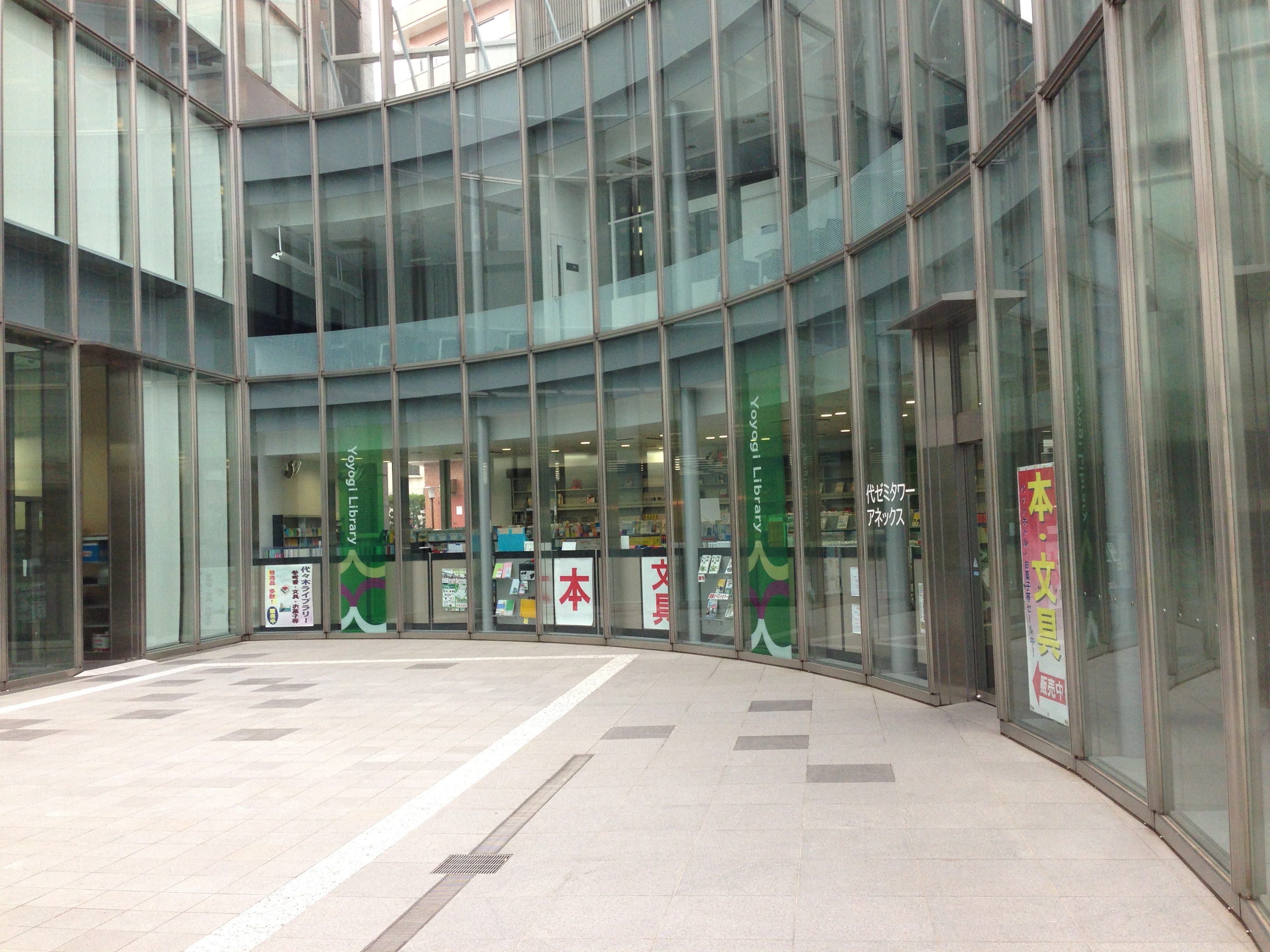
There were various ‘No Smoking’ signs. This one seemed to be expressing itself in a somewhat counterproductive way. Near as I can tell, it says “Walk journey/carry out consume/smoke smoke prohibition stop/halt[1]…Shibuya ward Smoking Rules” (Note that ‘Ru-Ru’ in Katakana transliterates to ‘Rules’.):
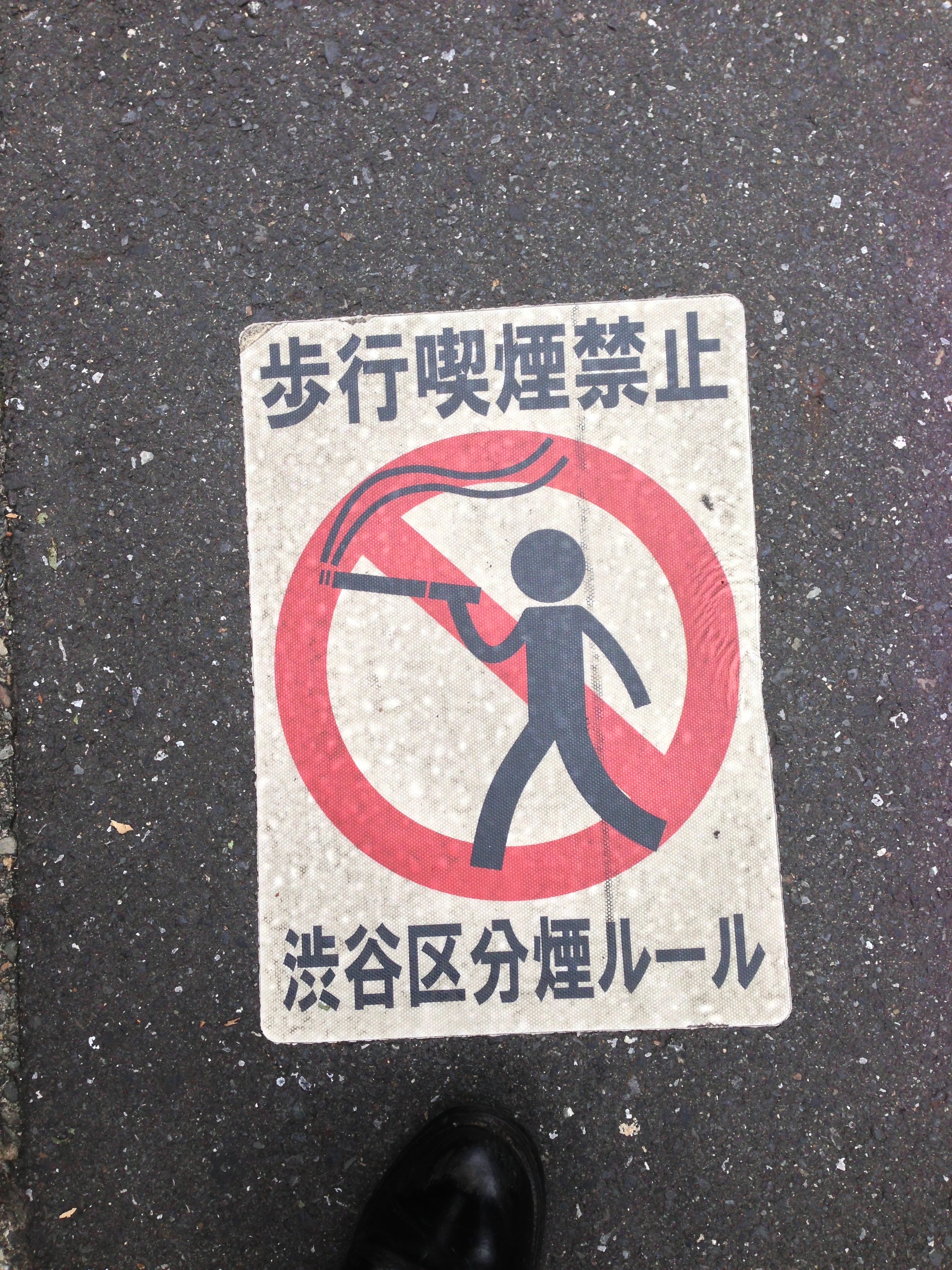
We saw a number of these little signs embedded in the paving stones. This one seems to say ‘electricity‘:
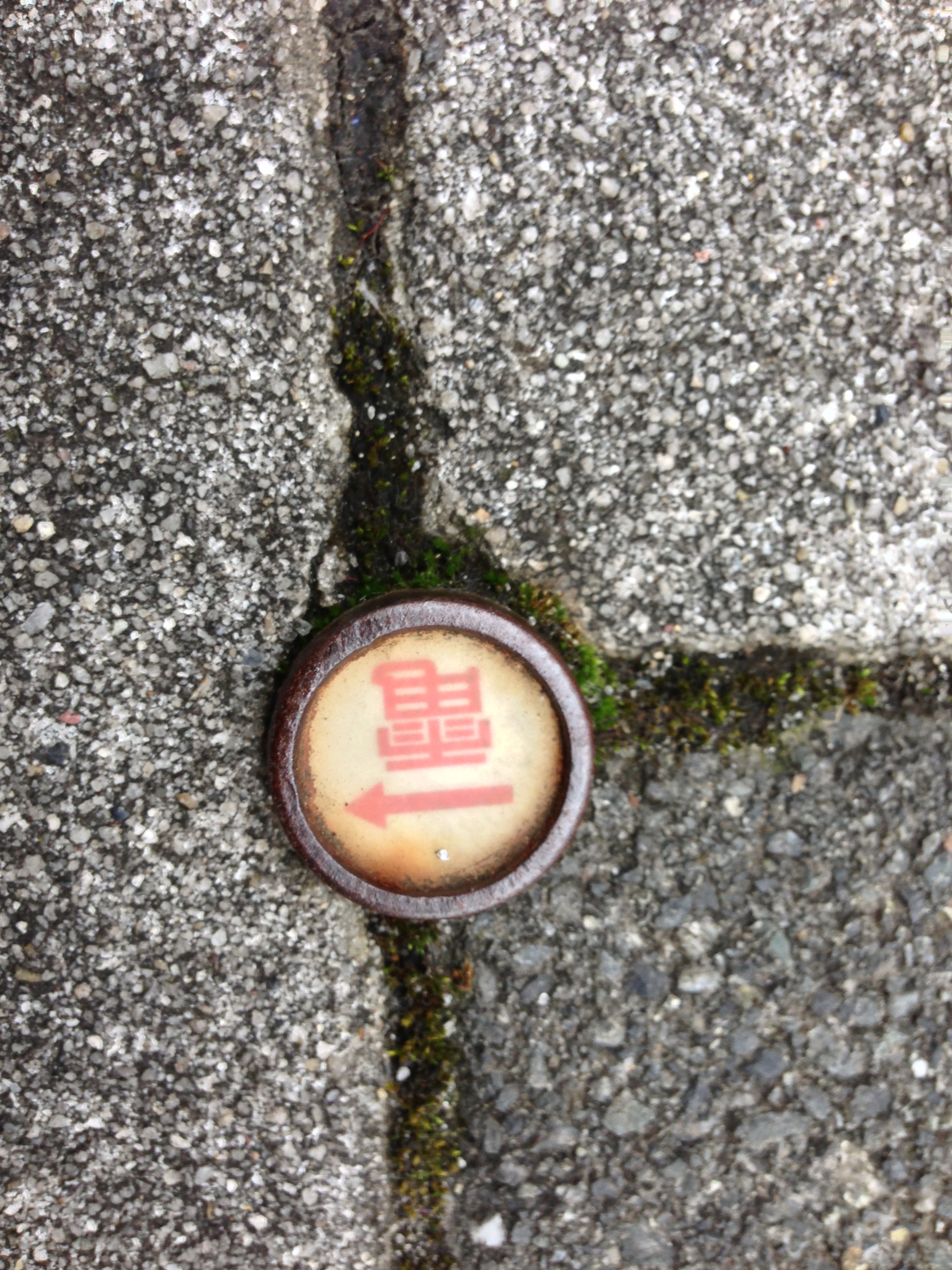
This one seems to say ‘weak electricity‘, perhaps suggesting that you should not dig here?[2]:

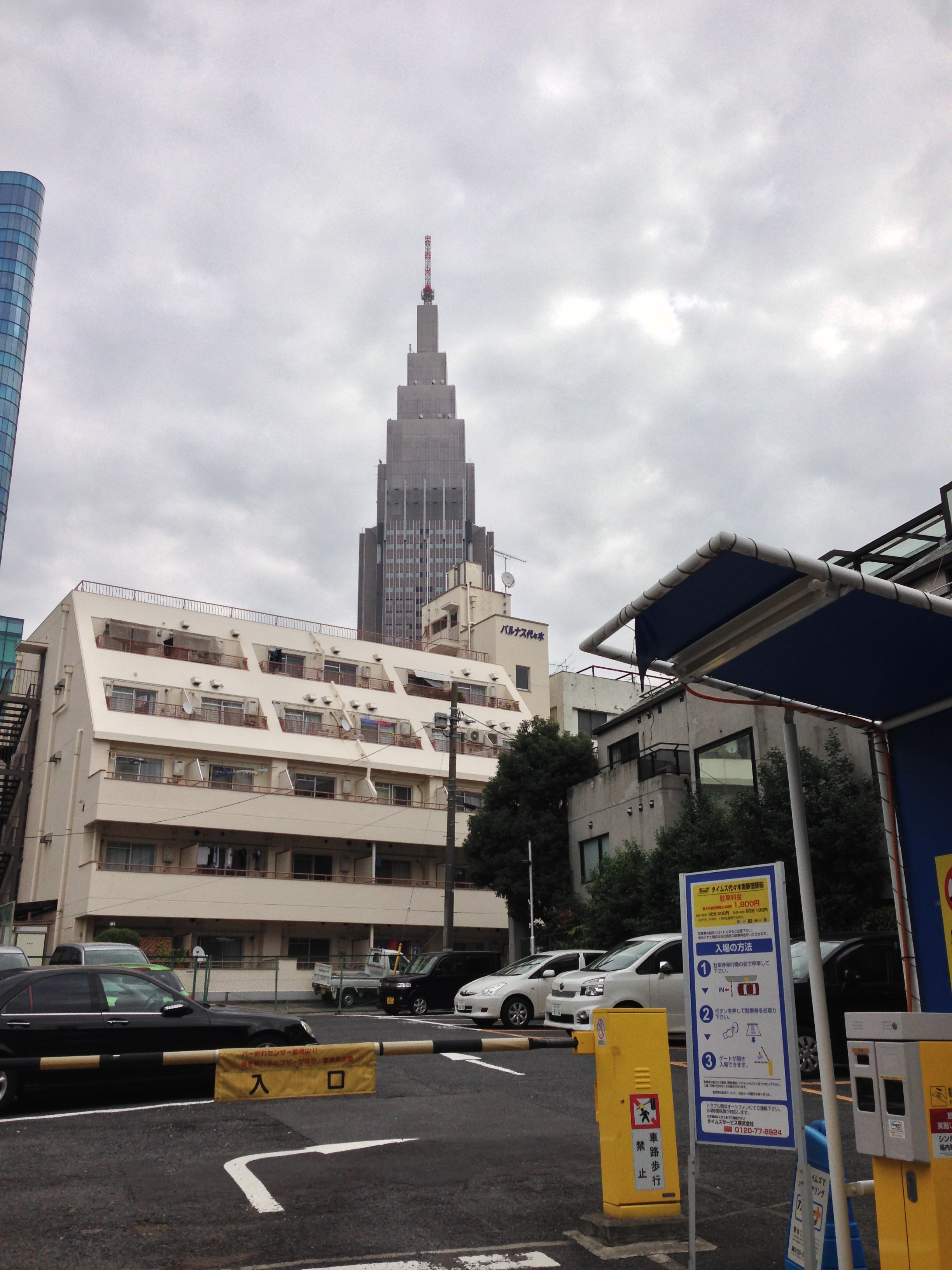
The warning sign on the arm seems to say:
Large black characters: “Enter mouth“, or “Entrance”
(Note that the smaller red characters were difficult to read, this is my best guess):
Smaller red characters:
“Pa/Ba- beam/girderRe SeNSa- ??Middle!!”
“Hand Wo(of)?Re?To Fu(Bu/Pu/Wa)Ga?Ri ???Come out”
Perhaps something about a bar sensor, and cars may come out? (Or perhaps the standard warning, that the bar may move seemingly of its own accord, and bonk you unexpectedly?)
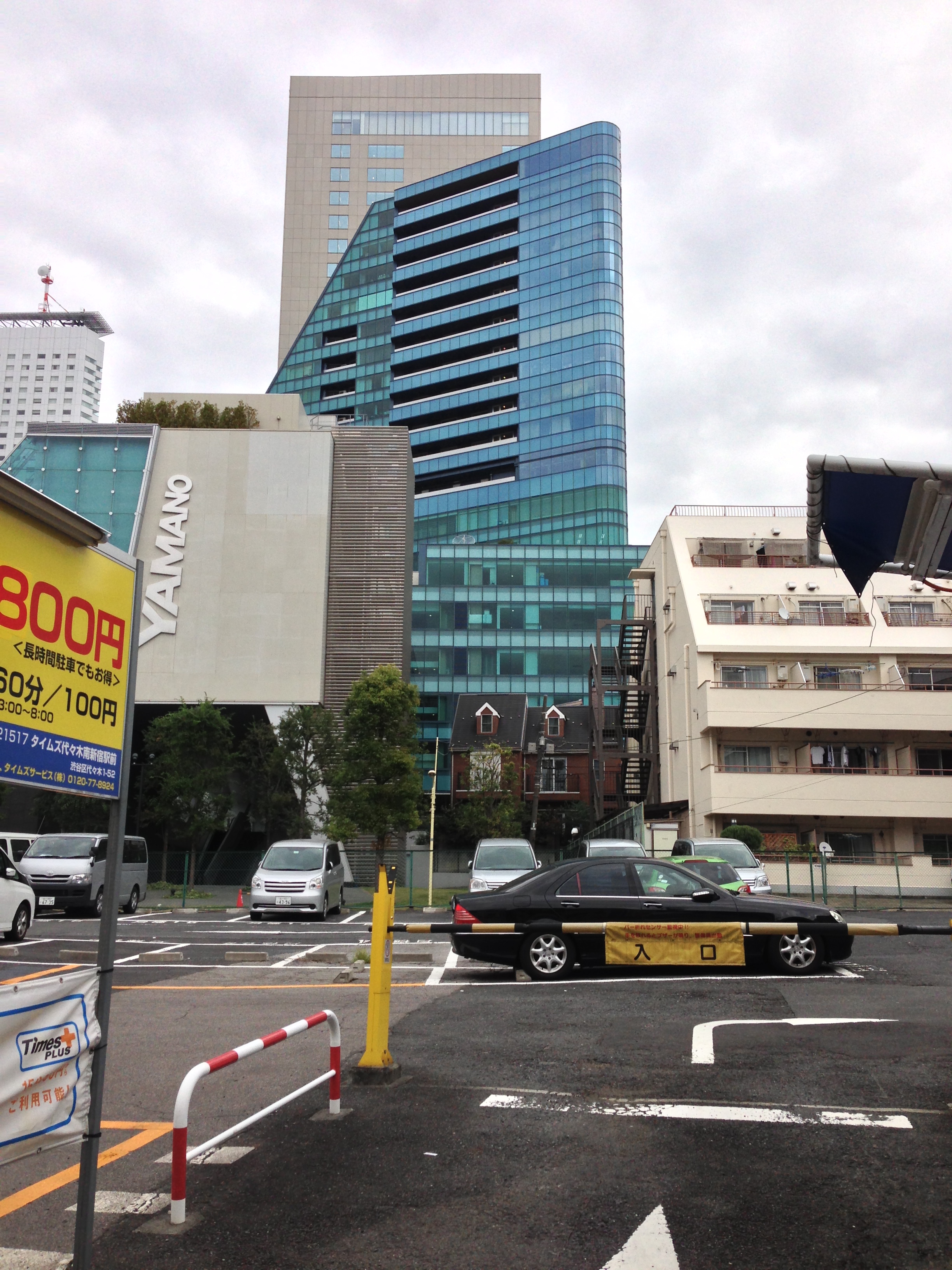
When we were there, there seemed to be some sort of election going on. Here is a selection of various campaign posters:
The one on the top seems to be a person called ‘NaGaTsuMa‘, with “The Democratic Party of Japan“, which apparently has had an interesting recent history.
Oddly, it mentions in the top right corner his birth year (1960) and month.
In the center of the poster, just to the left of his face: “Me, the fight I continue“, or “I continue the fight/I keep fighting.”
In red, it says: “one round/month/perfection in any event, day true second birth”
Interestingly, his name is in Hiragana, not the more formal Kanji, I’m assuming so it’s easier to read. At the time of the election, he would have been 52, I’m not sure if that would make him young or old for running for office (as to why he would include his birth month on the poster). Also note the prominent but understated wedding ring.
The next poster down is ‘Hideko Murakami’ (not to be confused with Murakami), who apparently had her face cut/vandalized out of her political poster. It’s difficult to tell what her party was, but the text at the top of her poster says: “East Capital Metropolis/all/everything (Tokyo) deliberation party deliberation leader / Metropolis/all/everything deliberation leader politics/government investigate/mediate/harmonize leader senior”
Suggesting she’s the senior leader, or a negotiator/mediator? (I can’t find anything on her in Google, to suggest why she would be a target of such specific vandalism.)
The other two signs seem relatively normal. Tamayo Marakawa seems reasonably famous.
The green sign has ‘DaKaRa oneself people/subjects party/faction“, or perhaps “So what if one’s self makes their own party”, perhaps referring to the party that had split off from the Liberal Democratic Party, and was currently in power.
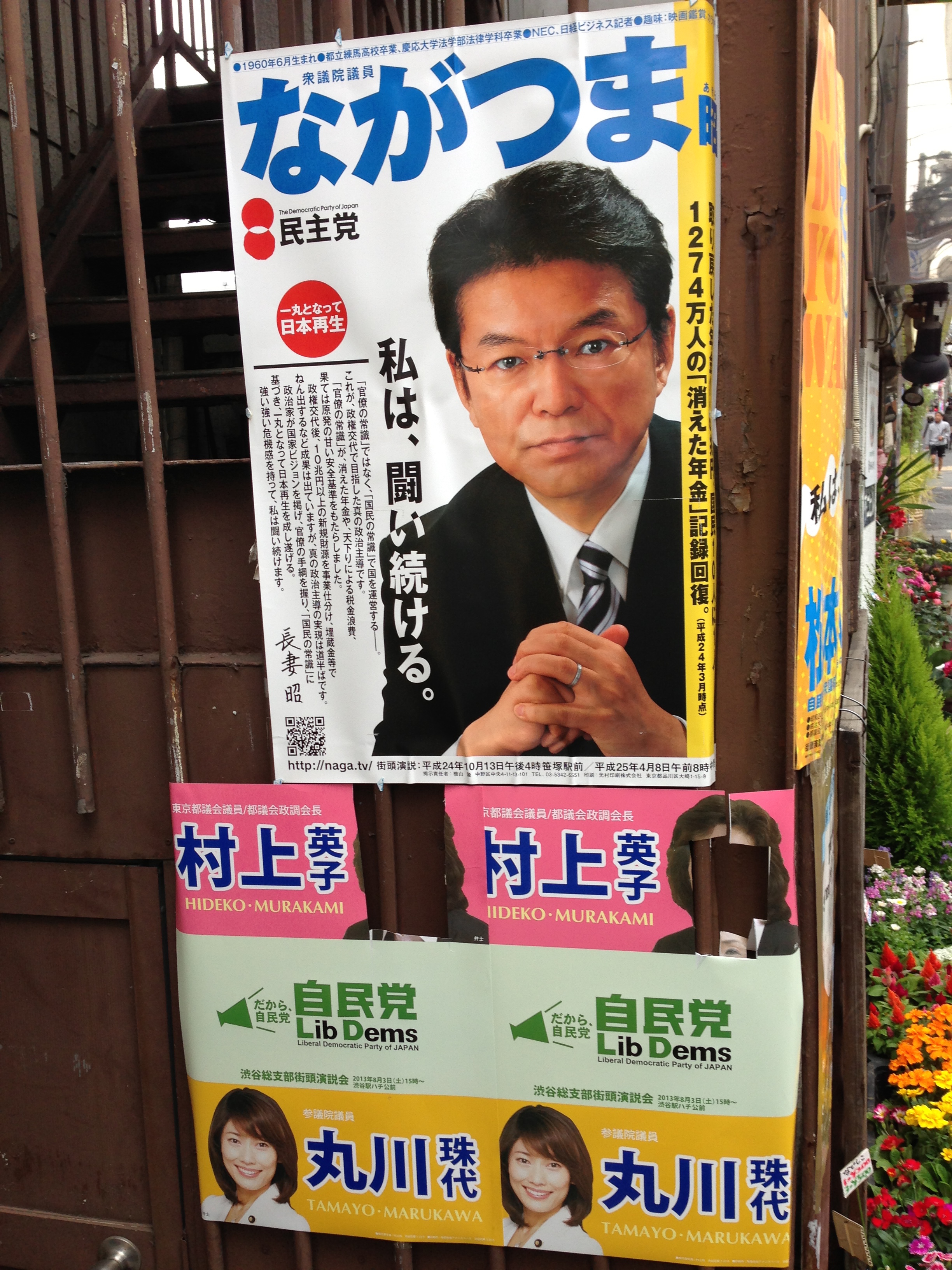
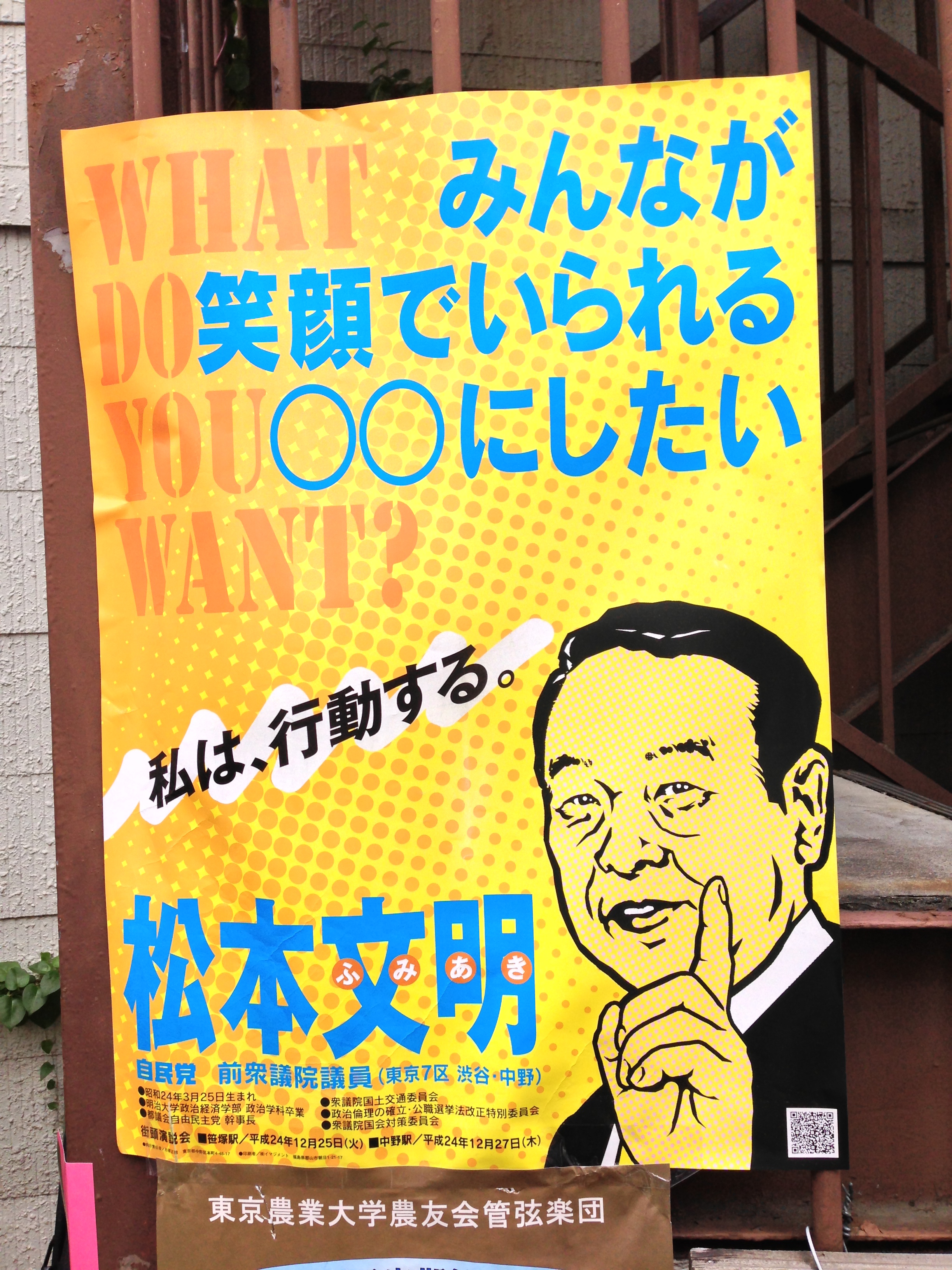
“What do you want?” A very bold statement, especially with the English being given equal treatment with the Japanese language. Direct translation: “MiNNaGa Laughing Face DeIRaReRu (of could to be) NiShiTaI (to do)”
The statement in black reads: “Me, I Act”
The person seems to by Fumiaki Matsumoto. Note that the person making the poster helpfully spelled out his first name ‘FuMiAKi’, probably to help people vote.
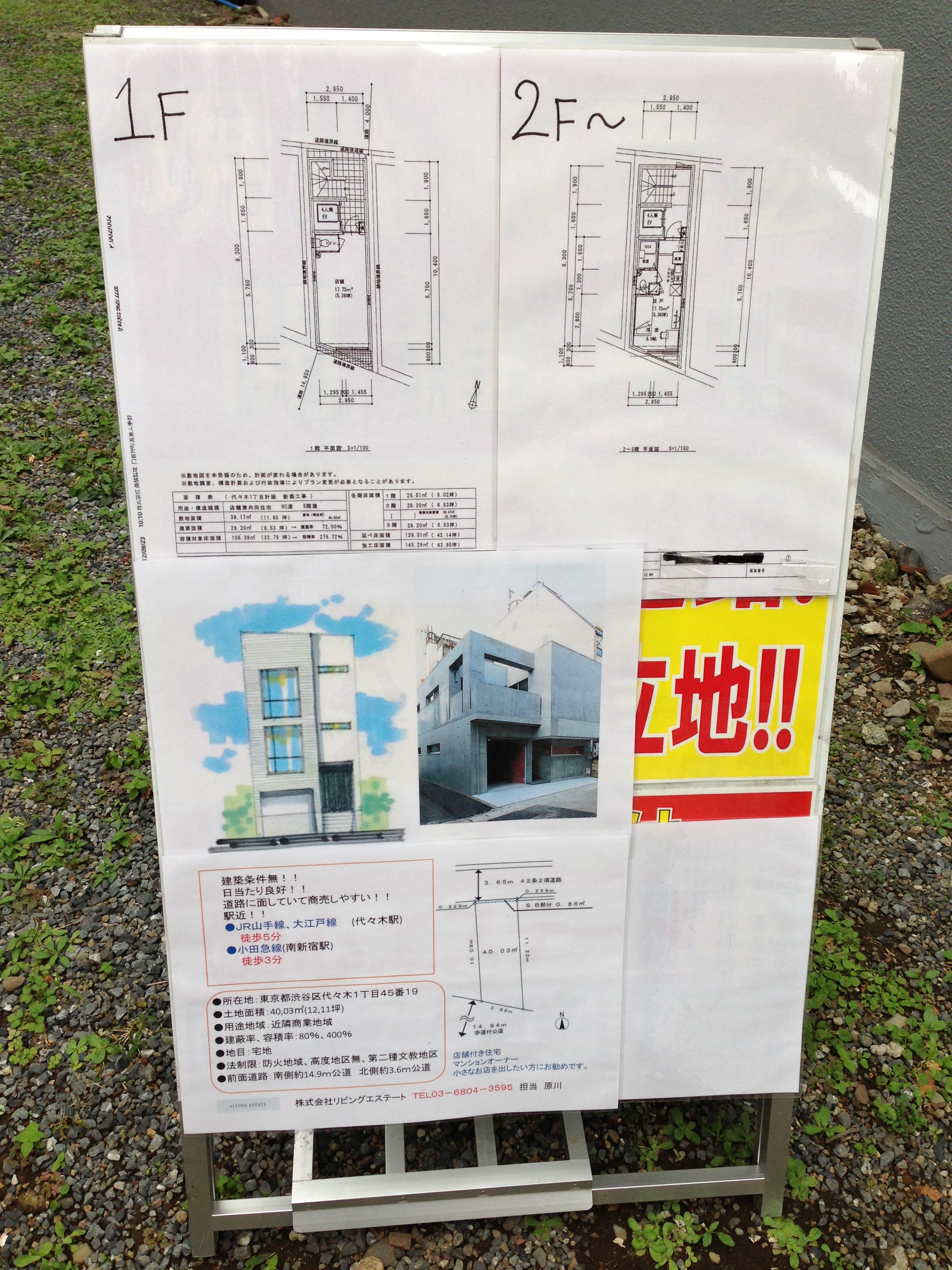
Stay tuned for next time, when our intrepid heroes visit the mythical Department Store ‘Tokyu Hands’!
[1]In some ways, these repeated similar words remind me of the words around the ‘Utwig Planetary Engineering Tool’, or Ab’s commentary about the ancient weapon[3]. Also similar to many sci-fi novels’ ‘translations’ of alien languages, putting multiple words to represent one alien word, to show that their concepts are grouped differently than they are in English.
[2]Google seems to agree, for what it’s worth.
[3]It’s written in dozens of different languages, but they all translate to ‘Boom’.
